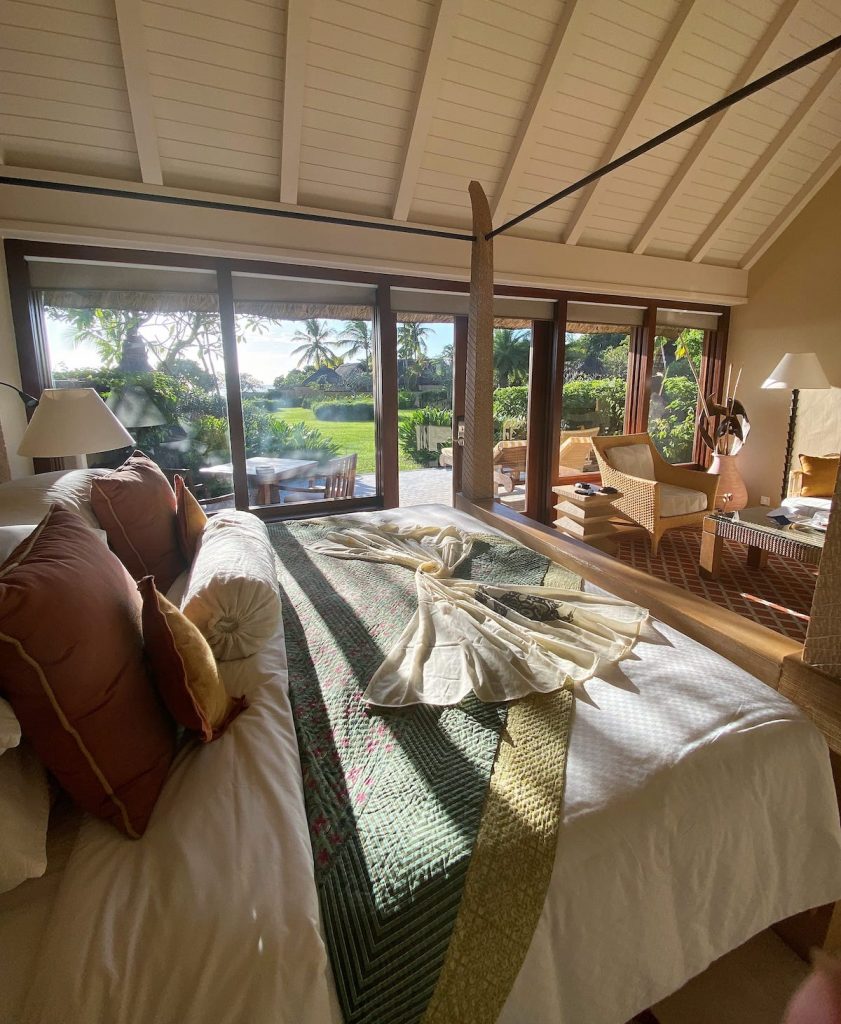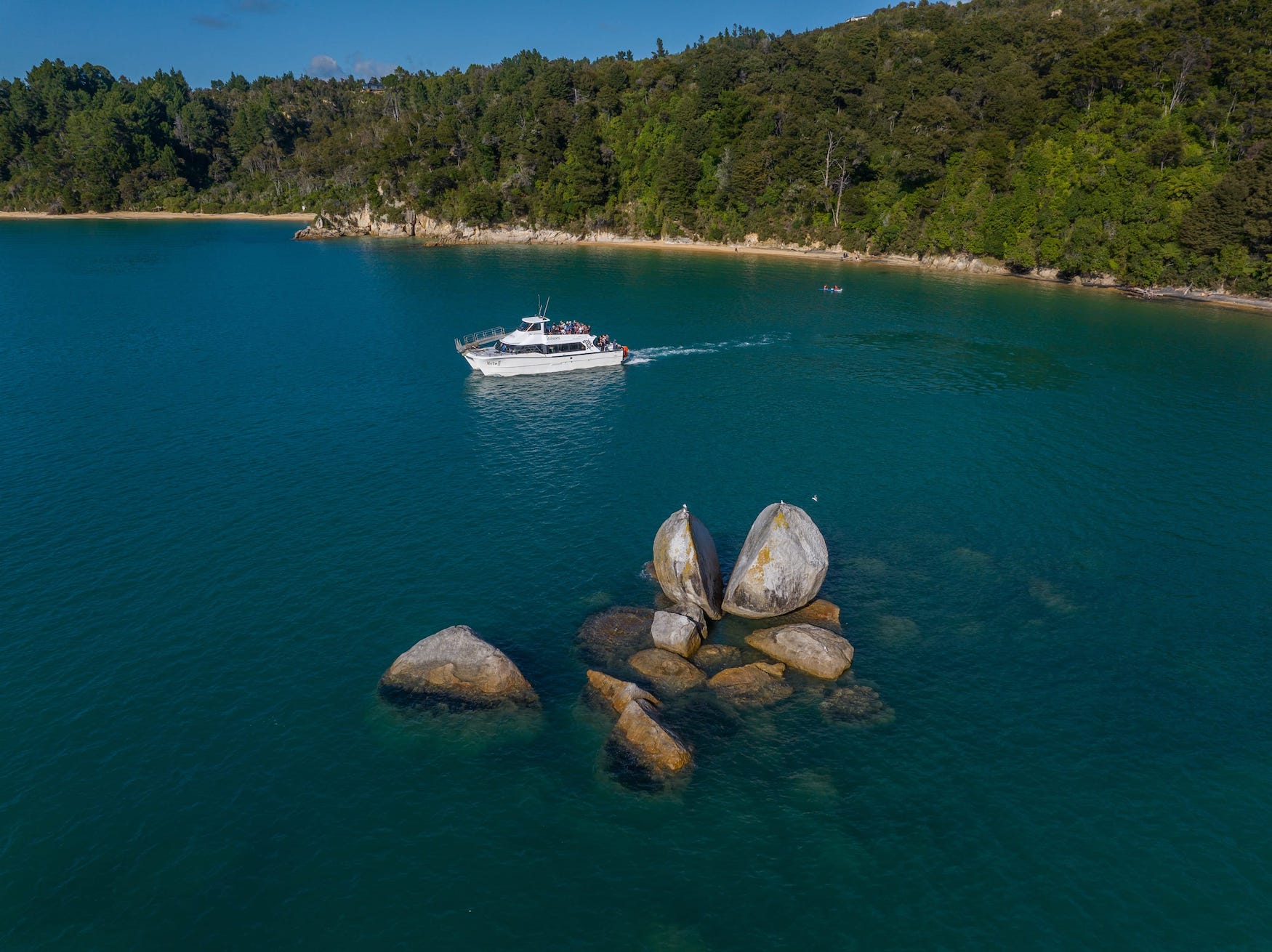Beyond those idyllic palm-lined beaches, Mauritius intrigues with folklores fuelled by staggering yet mysterious beauty. Dig beneath the surface, and you’ll discover a mystical side to Mauritius to keep you enthralled long after your return to reality.
Formed by underwater volcanic eruptions over eight million years ago, Mauritius is part of the remote archipelago forming the Mascarenes Islands, including Rodgriues and Le Rèunion. Shaped by its African, Chinese, Indian and European roots before its independence in 1968, these ethnic influences have created a unique culture reflected in the food, architecture, music, dance, religion and language. Petite in size, just 61 kilometres in length and 45 kilometres wide, you can get to most places in only an hour.
I arrived during winter, and if you’re reading this while plunged into Perth’s winter, you’ll happily trade places for Mauritius’ balmy year-round climate thanks to its proximity to the Tropic of Cancer.
Mauritius is often favoured by loved-up honeymooners and empty nesters spending their kids’ inheritance at decadent resorts. If staying in the south, my picks are the beachside Sands Suites Resort and Spa or Paradis Beachcomber Golf Resort and Spa. If you want to go all out, the Oberoi Beach Resort in the north on the powdery sands of Turtle Bay bathes its guests in opulence and views every which way.

If you can bear to leave the luxury of your resort for a sample of the island’s rich culture, head to the capital Port Louis for a wander through the markets, museums and street art. Delve further into the cuisine on a Taste Buddies food tour and discover how Chinatown came to be, while sampling a mix of exotic flavours.
You can’t visit Mauritius without trying Creole food, and about 15 minutes from Port Louis, dining at Escale Creole restaurant is like being invited over for a family meal by owners Marie-Christine and her mum Majo. You’ll leave as friends after spending time with this dynamic duo and dining on classics like rougaille creole sausage, vindaye fish curry and venison salmi stew.
On a side note, there’s speculation that the extinct and flightless dodo bird could be genetically recreated as its DNA has been discovered. While on a quad bike safari passing alongside Jurassic Park-esque mountain ranges through Casela Nature Parks, I begin to wonder what else could be recreated as friendly zebras and less friendly ostriches approach. A giraffe poking its head out from behind a tree spellbinds, grinding our bike to a halt in respectful silence for these majestic creatures.

Surreal experiences enchant all over the island, from the underwater waterfall (due to an optical illusion witnessed from the air) to watching the rhythmic gyrations of a Sega dance performance. A visit to the Grand Bassin, aka Ganga Talao, in the Savanne district was enlightening when a priest blessed me. After pressing a red bindi onto my forehead, acting as a conduit between himself and the ether, he delivered an impromptu sermon about the significance of water, prayer rituals, and how anyone is welcome to wander among the statues and lake-side temple. Respecting the tradition of leaving your shoes outside invites the earth’s vibration to flow through your bare feet and into your heart.
As the name suggests, the Seven Coloured Earths at Chamarel Geopark emerges from the tropical landscape in rainbow-striped red, brown, purple, green, blue, purple and yellow dunes. Almost stealing the show from the iconic dunes, we discover honeymooning giant tortoises in the throes of passion. Leaving them to their slow-motion thrusting, we cooled off at the café over a sugar cane drink and Chamarel Coffee, grown in nearby plantations 280 metres above sea level. While in Chamarel, add the Rhumerie de Chamarel to your list, as well as the tallest single-drop waterfall in Mauritius at 100 metres, enjoyed from the lookout or by a three-hour trek rewarded with a swim in the waterfall’s pool.
At a complete juxtaposition to this tranquillity, Le Morne in the southwest is a rugged mountain jutting 500 metres above the Indian Ocean. Once used as a shelter for runaway slaves, it was declared a UNESCO World Heritage Site in 2008 for its role in marooning slaves, many of who plummeted to their death in a mass suicide or massacre, depending on who’s telling the story.
Mauritius’ second UNESCO World Heritage Site is also slave-related at the Aapravasi Ghat in Port Louis. This eerie site was selected for a British Government experiment in 1834 to replace slaves with free labour, known as indenture, where half a million labourers were sent from India to work on sugar plantations. Whatever term you give it, without the sacrifice of these poor souls, sugar cane wouldn’t be the most important industry on the island alongside tourism.
A sugar cane field in Plaine Magnien alongside the highway near the airport is where I notice one of the three pyramids in the field jutting out of the reeds. Apparently, there are seven pyramids on the island and how they came to be adds to the intrigue. Built with black volcanic rock excavated by slaves from sugar cane fields for shelter and storage is one explanation. But this doesn’t explain the shape and why there are identical structures in Tenerife and Sicily.

I’ll happily further research this phenomenon on my next visit.
Carmen Jenner was a guest of Air Mauritius, Mauritius Tourism Promotion Authority, the Sands Suites Resort & Spa, Paradis Beachcomber
Golf Resort & Spa, and The Oberoi Beach Resort.
Fact box:
Begin your journey at the Perth Airport’s first international pay-per-use lounge, with all-inclusive food and wine with panoramic views of the city skyline, mountains and runway.
Fly: Mauritius Airlines flies direct twice a week between Perth and Mauritius.
Stay: Sands Suites Resort & Spa; Paradis Beachcomber Golf Resort & Spa; The Oberoi Beach Resort
































